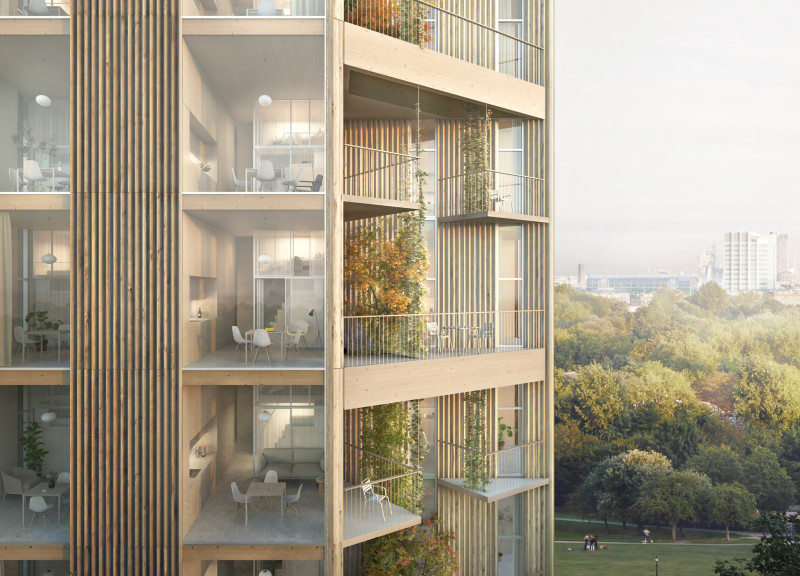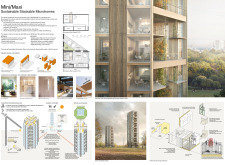5 key facts about this project
Modular design facilitates the construction of two distinctive unit types: Mini and Maxi. The Mini units focus on basic living essentials, making them ideal for affordability and efficiency, while the Maxi units offer more space and premium features, enhancing the living experience within a compact area. The stacked arrangement of these microhomes allows developers to efficiently utilize vertical space, creating opportunities for increased residential density without sacrificing individual livability.
Innovative Design Approaches
A key feature of this project is its emphasis on modularity and sustainability. The use of cross-laminated timber (CLT) as the primary structural material not only enhances the building's ecological footprint but also improves construction speed and quality. CLT is favored for its strength, reducing the carbon impact associated with conventional materials.
Furthermore, the integration of high-efficiency glazing systems maximizes natural light and airflow, reducing the dependency on artificial lighting and climate control. This aspect optimizes energy consumption, aligning with the project’s sustainability goals. The design also incorporates outdoor living spaces, such as balconies and terraces, which not only enhance the residents' quality of life but also the building’s integration with its surroundings.
Community-Focused Design
Community engagement plays a critical role in the architectural design of this project. Shared communal areas are strategically placed within the microhome configuration, promoting social interaction among residents. These spaces are designed to facilitate lifestyle activities and foster relationships, contributing to a sense of belonging within a densely populated environment.
Additionally, the project adopts energy-efficient systems, including solar panels and smart appliances, reinforcing its commitment to sustainability. The unique design elements—ranging from adaptable layouts to the emphasis on outdoor spaces—distinguish this project from traditional urban housing solutions.
Explore the project presentation to dive deeper into architectural plans, sections, and designs that provide further insights into the innovative ideas behind this microhome initiative. Understanding these architectural elements can illustrate how they collectively contribute to a sustainable urban living framework, making this project a relevant case study in modern architecture.























